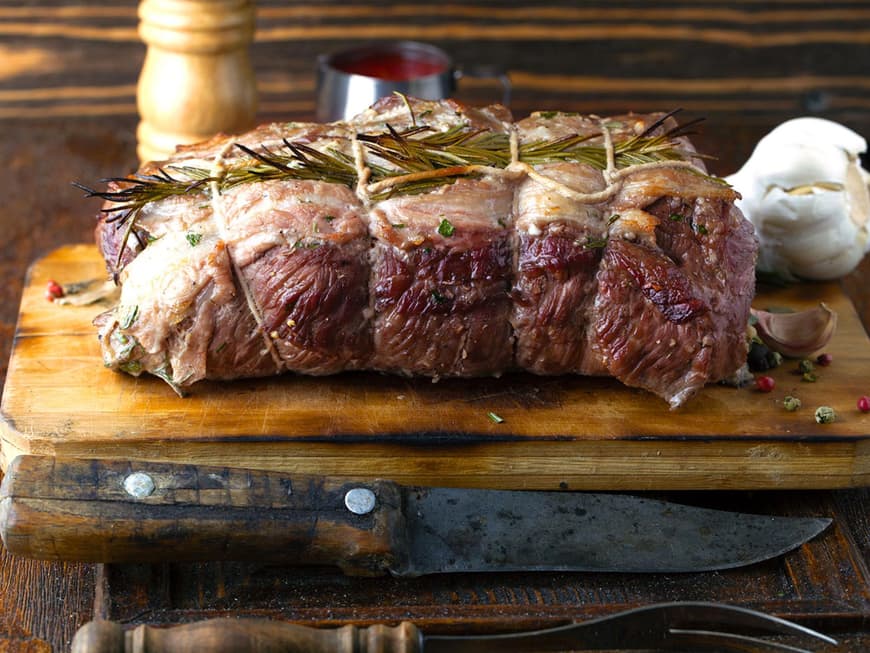
- What does bridging mean?
- Bridging meat with kitchen twine
- Perfect bridging: Here's how!
What does bridging mean?
The term "bridieren" comes from the French and means "to bridle". This common cooking technique for shaping meat, fish or vegetables is also known as "dressing". It is intended to hold poultry, roulades etc. together during cooking so that the cooking time is the same all round and wings or legs do not stick out and burn or become dry. There are many ways of bridging meat or fish, including cooking with clips, wooden skewers or pins. However, the most common method is to cook meat with kitchen twine.
Bridging meat with kitchen twine
This involves wrapping roasts, roulades or poultry such as chicken or turkey with kitchen twine before cooking. The aim of bridging is to ensure that they brown evenly all over during cooking, grilling or roasting and that the cooking time is the same throughout.
Juicier meat through basting >>>
Perfect basting: Here's how!
1. first place the kitchen twine around the meat and knot it at the top.
2. now place another loop around the meat at a distance of about 2 centimetres.
3. repeat the process until you finally place the kitchen twine lengthwise around the roast and knot it.
Bridging allows the meat to be seared evenly on all sides and keeps it nice and juicy. Before serving, cut the kitchen twine with scissors and remove. Wooden skewers or roulade pins can also be removed after preparation.
You can also see how to prepare your dish perfectly for bridging here in the video:
